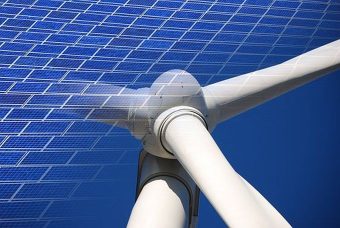
India added the least renewable energy capacity it has added in six quarters during Q2 2017, which is also 25% less than what was added during the same period last year.
According to the data released by Central Electricity Authority, India witnessed a renewable energy capacity addition of just 1,043 megawatts between April and June 2017, compared to 1,680 megawatts during the same period last year. Solar power capacity addition was down from 1,026 megawatts in 2016 to 826 megawatts in 2017. Wind energy capacity fared even worse, with the capacity addition falling to just 226 megawatts compared to 285 megawatts.
Coal-based power capacity, on the other hand, fared much better than renewable energy capacity. Almost 2,400 megawatts of coal-based power generation capacity were added in Q2 2017, up from 1,040 megawatts in Q2 2016. Interestingly, some capacity in the coal and waste-to-power generation capacity was retired in June 2017.
In 2016–2017, India witnessed a massive surge in renewable energy capacity addition, helped by a healthy pipeline of solar power projects, due to a large number of competitive auctions and wind energy projects lined up for commissioning before March 31, 2017, when some tax and financial incentives were set to expire.
“India added more renewable energy capacity than thermal power capacity in financial year 2016-17, the Central Electricity Authority of India has reported. The renewable energy capacity added during the period April 2016 to March 2017 was nearly twice as much as the thermal power capacity added during the same period.
“A total of 6,990 megawatt coal-based power capacity was added in India in FY2016-17 while the thermal power capacity addition during the financial year stood at 7,655 megawatts. In comparison, 14,140 megawatts of renewable energy capacity was added in the same period.”
The second quarter usually sees reduced capacity addition across the entire Indian power sector, as it is the first quarter of the Indian financial year. Project developers are under no pressure to meet deadlines to secure any incentives that usually expire at the end of March every year.
Many other factors would likely have impacted the renewable energy capacity addition as well — issues with land acquisition, the end of some crucial incentives, and market developments that increased uncertainty for many project developers.
Wind and solar power are the largest contributors to India’s renewable energy capacity addition and both sectors witnessed some crucial developments in the last few months. Due to increased competition in the solar power market, tariff bids crashed by 26% in a matter of three months earlier this year. This development inspired power utilities to renegotiate old power purchase agreements, which has created a sense of uncertainty in the minds of developers.
Source: cleantechnica.com

